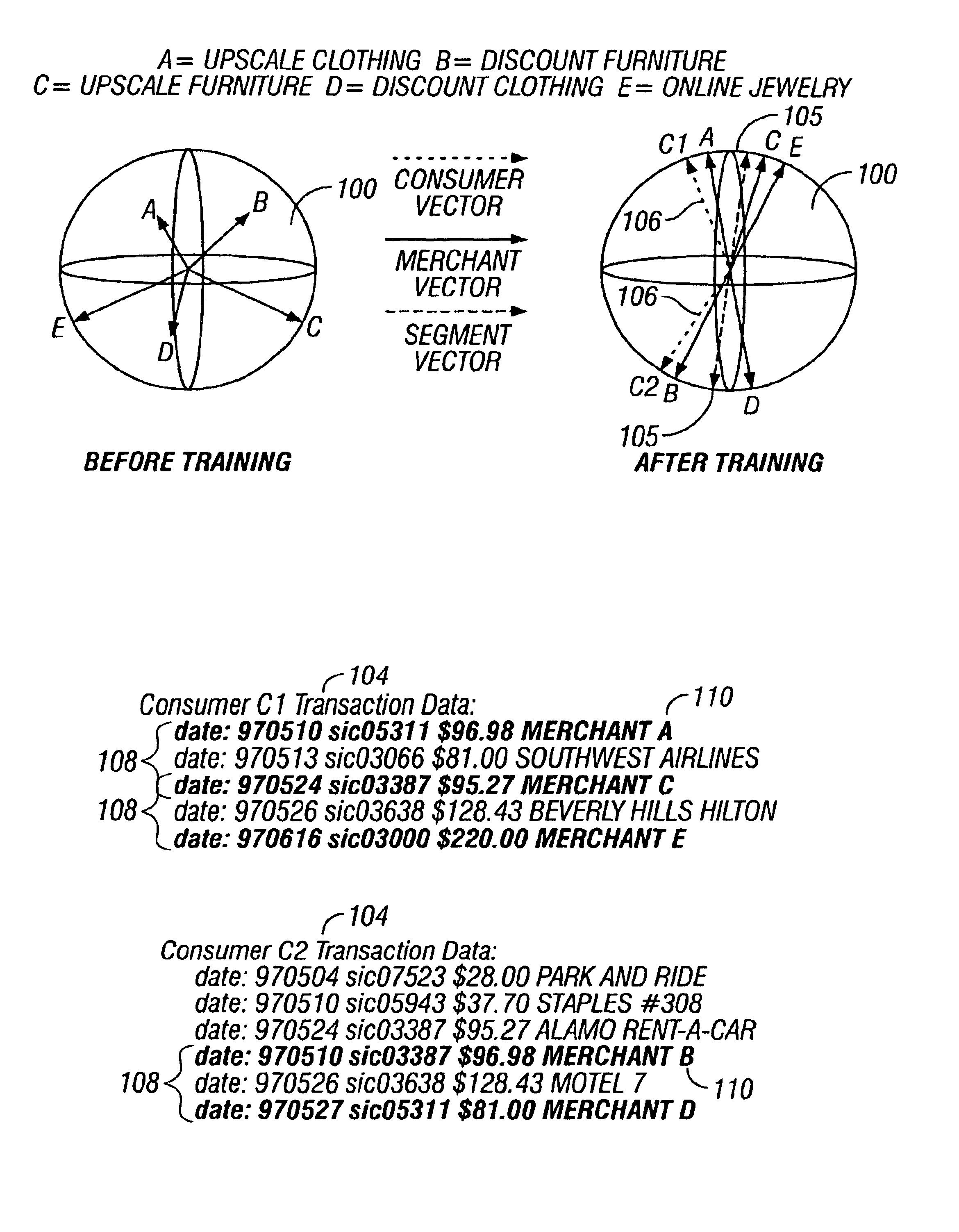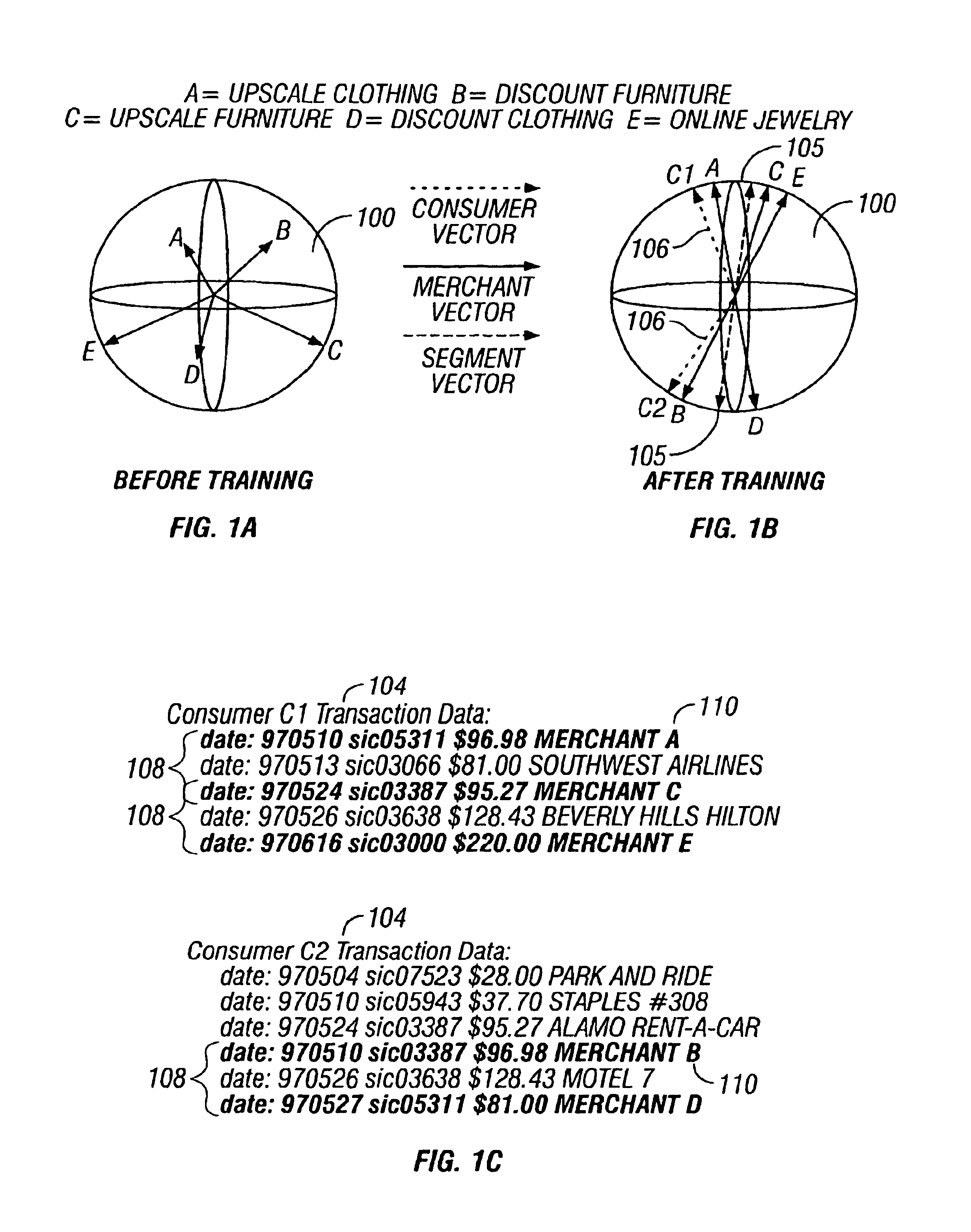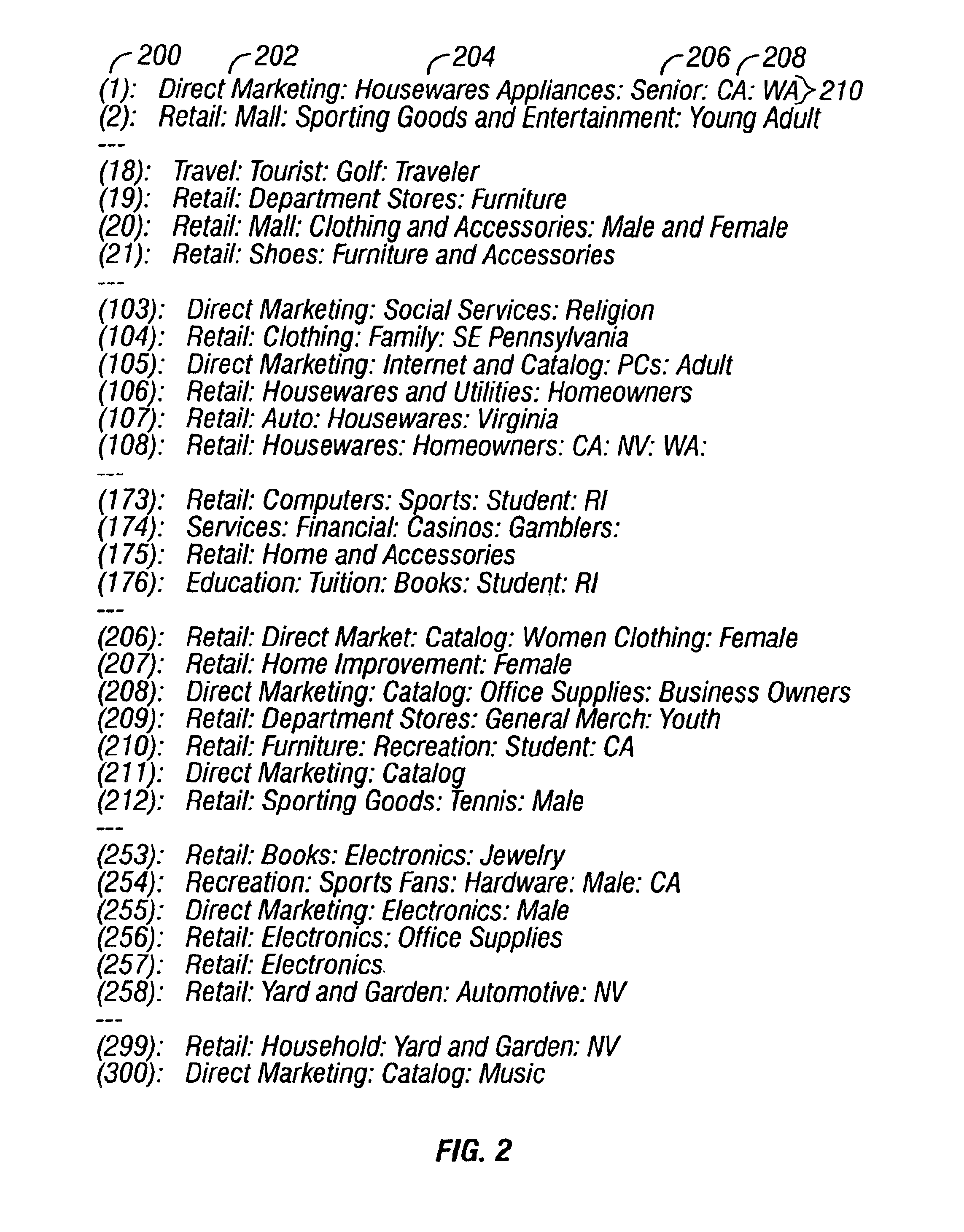Predictive modeling of consumer financial behavior using supervised segmentation and nearest-neighbor matching
a predictive modeling and consumer financial technology, applied in the field of consumer financial behavior analysis, can solve the problems of incomplete collection of unrelated data, poor indicator of consumer spending patterns, and often misstated approach to understanding consumer behavior, so as to accurately identify and capture the patterns of spending behavior, specific and accurate targeting of promotions, and increase membership value
- Summary
- Abstract
- Description
- Claims
- Application Information
AI Technical Summary
Benefits of technology
Problems solved by technology
Method used
Image
Examples
Embodiment Construction
A. Overview of Consumer and Merchant Vector Representation and the Co-occurrence of Merchant Purchases
One feature of the present invention that enables prediction of consumer spending levels at specific merchants and prediction of response rates to marketing offers is the ability to represent both consumer and merchants in the same modeling representation. A conventional example is attempting to classify both consumers and merchants with demographic labels (e.g. “baby boomers”, or “empty-nesters”). This conventional approach is simply arbitrary, and does not provide any mechanisms for directly quantifying how similar a consumer is to various merchants. The present invention, however, does provide such a quantifiable analysis, based on high-dimensional vector representations of both consumers and merchants, and the co-occurrence of merchants in the spending data of individual consumers.
Referring now to FIGS. 1a and 1b, there is shown a simplified model of the vector space representat...
PUM
 Login to View More
Login to View More Abstract
Description
Claims
Application Information
 Login to View More
Login to View More - R&D
- Intellectual Property
- Life Sciences
- Materials
- Tech Scout
- Unparalleled Data Quality
- Higher Quality Content
- 60% Fewer Hallucinations
Browse by: Latest US Patents, China's latest patents, Technical Efficacy Thesaurus, Application Domain, Technology Topic, Popular Technical Reports.
© 2025 PatSnap. All rights reserved.Legal|Privacy policy|Modern Slavery Act Transparency Statement|Sitemap|About US| Contact US: help@patsnap.com



